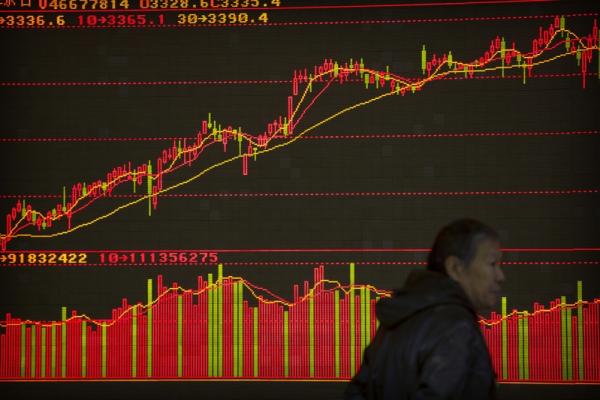Tonix Pharmaceuticals stock halted ahead of FDA approval news
* Fed cut fails to halt slide; S&P 500 drops 2.8%
* Australia down 1.3%, Nikkei up 0.5% in choppy trade
* Dollar slides vs Asian currencies
* Asian stock markets: https://tmsnrt.rs/2zpUAr4
By Tom Westbrook
SINGAPORE, March 4 (Reuters) - Asian shares struggled to
find footing on Wednesday and bonds held stunning gains, as an
emergency rate cut from the U.S. Federal Reserve seemed to stoke
rather than soothe fears over the coronavirus' widening global
economic fallout.
The surprise 50 basis point cut came with commentary
highlighting the limits of monetary policy, and Wall Street
indexes fell sharply. Gold surged and the dollar sank. .N
The yield on benchmark 10-year U.S. Treasuries, which falls
when prices rise, hit a once unimaginable low of 0.9060% and has
held just above that level in Asian trade. US/
MSCI's broadest index of Asia-Pacific shares outside Japan
.MIAPJ0000PUS rose 0.4% amid choppy trade across the region,
though most of the gains were confined to South Korea. Japan's
Nikkei .N225 oscillated between flat and modest gains.
"The U.S. Federal Reserve's attempt to surprise the market
may have misfired," said Kerry Craig, strategist at J.P. Morgan
Asset Management in Melbourne.
"While the action was intended to steady market confidence,
the sharpness of their reaction and the off-schedule timing of
the move could be interpreted as the Fed being much more
concerned about the economic impact than first thought."
Australia's S&P/ASX 200 index .AXJO fell 1.5%, while
stocks in Hong Kong and China traded flat. Korean stocks .KS11
bucked broader weakness, rising 2% after the government
announced a stimulus package of 11.7 trillion won ($9.8 billion)
to mitigate the impact of the virus outbreak. Futures for the S&P 500 ESc1 were volatile as the results
of Democratic Party primaries came in, eventually firming 1% as
moderate Joe Biden looked set to win five big states compared
with two for radical Bernie Sanders.
The U.S. 10-year Treasury yield US10YT=RR steadied at
0.9861%.
The dollar touched a five-month low against the safe-haven
Japanese yen JPY= and slipped against most other Asian
currencies. FRX/
"Given the way that the market's reacted, it's telling you
that there's a little bit of panic," said Andrew Gillan, head of
Asia ex-Japan equities at Janus Henderson in Singapore.
"They're a bit worried that interest rate cuts are not going
to make a massive difference...and what's going to be required
is probably going to be more fiscal stimulus," he said, his fund
having invested, for example, in Chinese cement and construction
stocks in anticipation of more government support measures.
LIMITS OF MONETARY POLICY
The Fed's surprise move - its first off-schedule cut since
the depths of the financial crisis more than a decade ago -
followed a massive shift in money market pricing. Futures swung rapidly late last week to expect such a cut at
the Fed's March meeting. Now they imply another 50 basis points
of easing by July, even as the investors and the Fed itself
raise questions about the efficacy of easing to deal with a
public health crisis. 0#FF:
"We do recognise that a rate cut will not reduce the rate of
infection, it won't fix a broken supply chain; we get that," Fed
Chairman Jerome Powell told reporters at a press conference.
The remark sent Wall Street from positive territory into the
red. Dow Jones industrial average .DJI , Nasdaq composite
.IXIC and S&P 500 .SPX each closed down close to 3%.
More than 3,000 people have been killed by the coronavirus,
about 3.4% of those infected - far above seasonal flu's fatality
rate of under 1%.
It continues to spread quickly beyond the epicentre in
China, with Italy overnight reporting a jump in deaths to 79 and
South Korea reporting more than 500 new cases on Wednesday.
"The question here is whether a conventional interest rate
response is sufficient," said Sameer Goel, chief strategist,
Asia macro, at Deutsche Bank in Singapore.
"It's not an economic shock, it's a shock driven by a
non-economic factor. It's still not clear how big the problem
ultimately is, or could be, and until you know that, it's hard
to know how much medicine to apply to it."
In currencies, the U.S. dollar fell across the board,
sending it to an eight-week low against a basket of currencies
=USD , while pushing the euro EUR= to an eight-week peak.
In Asian trade, the yen hit its highest against the
greenback since October, at 106.84 per dollar, before paring
gains. The Australian dollar AUD=D3 advanced to $0.6603.
Oil prices firmed on expectations of production cuts, with
Brent rising 90 cents to $52.79 per barrel LCOc1 and U.S.
crude up 1.9% at $48.06 a barrel CLc1 . O/R
Gold rose 0.2% to $1642.21 an ounce XAU= . GOL/
(Editing by Sam Holmes and Kim Coghill)
